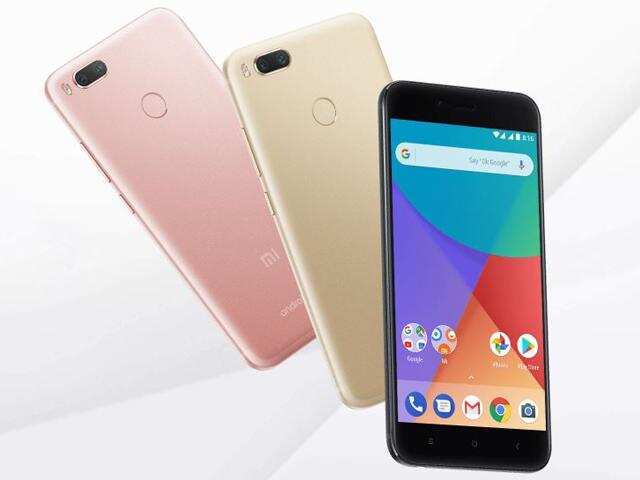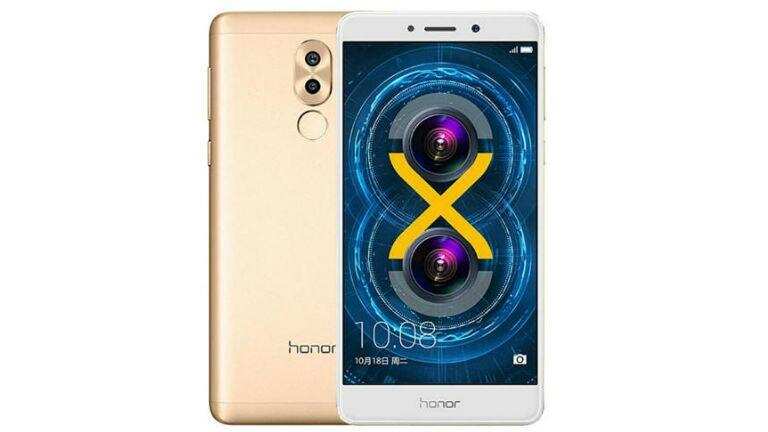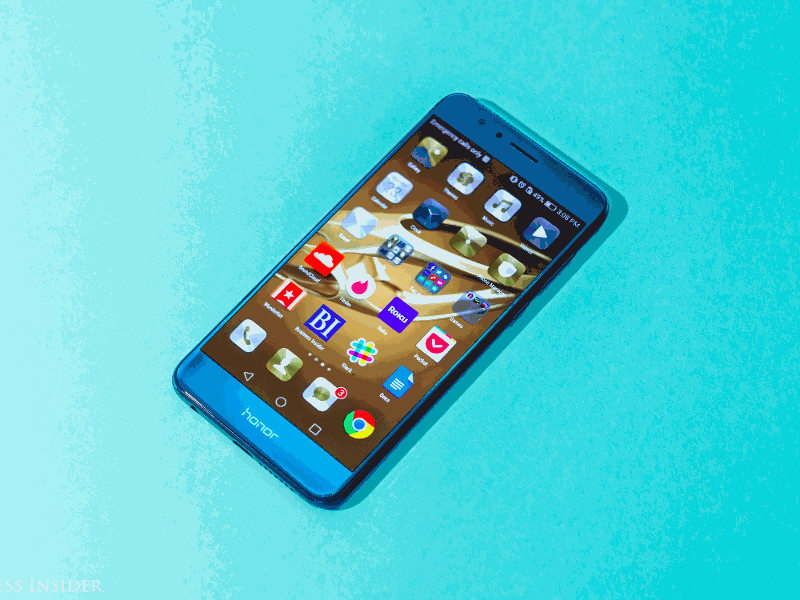Selfies aren't my thing. I'd rather shoot interesting places and people — and they're usually not me. But the lowly selfie might soon enjoy a renaissance thanks to the iPhone X.
When I found out I'd have a chance to test the camera tech in Apple's iPhone X, which will be released on Friday, Nov. 3, I knew I wanted to see what the new selfie camera could do. It's a 7-megapixel front-facing camera that supports Portrait mode, where the subject in the foreground is in focus and the background is blurred. Add the various Portrait Lighting effects and the front facing camera is reborn.
Apple says its goal with the TrueDepth camera system is to "bring dramatic studio lighting effects to iPhone and allow customers to capture stunning portraits with a shallow depth-of-field effect in five different lighting styles." But like I said, I'm not big on selfies — so I decided to see what the iPhone X could do by flipping the phone around and taking portraits of people I came across on Monday with that front-facing camera. I tested the various lighting effects — Natural Light, Stage Light, Stage Light Mono, Studio Light and Contour Light.
After 10 hours on the streets of San Francisco, mostly in and around Fisherman's Wharf, I was impressed by how Portrait Mode transformed the everyday selfie into a respectable and elegant photo. I also realize that might not be as easy as it sounds. CNET senior editor Scott Stein, who notes that the lighting effects are still in beta on the iPhone X's front-facing and rear-facing cameras, had trouble taking selfies. "My face ended up looking oddly cut-out and poorly lit," he says in his hands-on review of the $1,000 iPhone X.
Here's what I was able to capture using all five effects of the iPhone X's front-facing camera.
Studio Light effectAlong the docks at Fisherman's Wharf, the front-facing camera with the Studio Light effect elevates the common selfie. Warm enveloping highlights make the subject's face pop against the background, giving the photo the crispness of a travel magazine portrait. A little more punch and contrast gives her a brighter and cheerier look.
With blown out highlights and a blurred background, this Studio Light effect makes the subject stand out against the blurred foreground of the crab he's holding. The Studio Light effect gives a nice golden glow to the subject — it's a subtle but effective lighting technique that makes for a compelling portrait.
Natural Light effectThis Natural Light selfie, taken at the marina at Fisherman's Wharf, has the dramatic blurred background bokeh effect that looks straight out of an adventure travel ad. This is a great example of taking a very busy background, with the cluttered masts and lines from the boats, and simplifying it while highlighting the subject — me. Were it not for my hand and camera in the reflection of my sunglasses, you might think this was a portrait shot with a DSLR camera.
The biggest problem I had while shooting was that outdoors, in direct sunlight, the front-facing camera was unable to operate in Portrait Mode. A warning popped up, telling me the subject was too bright. By adjusting the angle of the camera or the angle of my head, I was often able to get the photo I wanted — but not always.
Stage Light effectStage Light has been used to full effect in the image below. Taken at dusk at a neighborhood puppet show in Oakland, thi s costumed usher has been separated from the original busy background of the attending crowd. That allows us to focus on the bright red suit and the subject's face. By separating him from a cluttered background, and offsetting the color against the black, this photo goes far beyond a standard selfie.
It was late Monday night when I ordered this Honey Graham ice cream from Humphry Slocombe in Oakland. But even with the poor fluorescent light in the creamery kitchen, I was able to capture this beautiful Natural Light portrait. The image is bright and focused on the smiling subject, allowing the background to drop away.
At Madame Tussauds wax museum in San Francisco, I used the Contour Light effect to take this photo of the model of comedian Robin Williams. The selfie camera adds a slight drama to the wax model. When coupled with the blurred background, I think it gives a dreamy texture to the photo.
Natural Light effectThere's a bit more noise in the dark parts of the image here, but any color noise is notably absent, which is unusual for a front-facing camera. Even though the subject is standing in poor indoor fluorescent lighting and he's backlit with sunlight, when Portrait Mode blurs out the background, you get a portrait worth keeping.
Put two people in a frame and the front-facing camera recognizes both subjects and separates them from the background — as long as they're the same distance from the camera. Good contrast, with bright blacks and even highlights, make this image pop.
Stage Light Mono effectThe Stage Light Mono effect takes the busy background of a candy store and drops it away, leaving us with a portrait against a black backdrop. This photo looks like it was taken in a studio. It's hard to imagine just how distracting and cluttered the background was, which is why I'm sure the Stage Light filter will be popular with those who want simple and dramatic images.
Source: iPhone X selfie camera makes it all about you


































 The K8 Note is the first device from Lenovo to come with a dual camera system and that too on a budget. The phone has a 13MP + 5MP dual camera setup which enables a user to go as low as f1.2 aperture via the camera interface for bokeh effect.
The K8 Note is the first device from Lenovo to come with a dual camera system and that too on a budget. The phone has a 13MP + 5MP dual camera setup which enables a user to go as low as f1.2 aperture via the camera interface for bokeh effect. The device is powered by a 2.6Ghz Helio P25 Octa-core processor paired with 3GB RAM. K8 Plus has 32GB internal storage that can be expande d up to 128GB. The 5.2-inch full HD display comes with Gorilla glass and Oleophobic coating. There is a dedicated music key that can be customised by the user according to needs. A 4,000mAh battery powers K8 Plus that the company claims would last two days.Lenovo K8 Plus is a compact version of the Lenovo K8 Note. It comes with a similar dual camera setup - 13MP + 5MP and has a dual-tone LED flash. Like the K8 Note, the K8 Plus has the same camera interface with real-time bokeh effect with f1.2 aperture via software.
The device is powered by a 2.6Ghz Helio P25 Octa-core processor paired with 3GB RAM. K8 Plus has 32GB internal storage that can be expande d up to 128GB. The 5.2-inch full HD display comes with Gorilla glass and Oleophobic coating. There is a dedicated music key that can be customised by the user according to needs. A 4,000mAh battery powers K8 Plus that the company claims would last two days.Lenovo K8 Plus is a compact version of the Lenovo K8 Note. It comes with a similar dual camera setup - 13MP + 5MP and has a dual-tone LED flash. Like the K8 Note, the K8 Plus has the same camera interface with real-time bokeh effect with f1.2 aperture via software. Cool 1 Dual is a budget smartphone with a dual-camera setup. It sports two 13MP cameras with f/2.0 aperture, PDAF, and dual-tone LED flash. The implementation is similar to the one found on phones like Huawei P9, Honor 8, Mi5S, etc. However, you get this tech just for Rs. 12,999, credit to Coolpad.While Coolpad has recently launched the Cool Play 6 with a dual camera, the Cool 1 launched earlier this year also has a great dual camera setup. It has a dual 13MP setup - a primary color lens and a secondary monochrome lens which enables the phone to capture images with excellent details.
Cool 1 Dual is a budget smartphone with a dual-camera setup. It sports two 13MP cameras with f/2.0 aperture, PDAF, and dual-tone LED flash. The implementation is similar to the one found on phones like Huawei P9, Honor 8, Mi5S, etc. However, you get this tech just for Rs. 12,999, credit to Coolpad.While Coolpad has recently launched the Cool Play 6 with a dual camera, the Cool 1 launched earlier this year also has a great dual camera setup. It has a dual 13MP setup - a primary color lens and a secondary monochrome lens which enables the phone to capture images with excellent details. The smartphone offers a rear dual-camera system that runs Android Nougat 7.1.2 OS at only Rs 14,999.This one was quite a departure for Xiaomi: a phone with stock Android instead of the heavily customised MiUI. This special version of the Mi 5x was launched in some markets due to customer demand. But it also has one of the best dual camera setups on this bench. The dual 12MP cameras enable 2x optical zoom and portrait mode.
The smartphone offers a rear dual-camera system that runs Android Nougat 7.1.2 OS at only Rs 14,999.This one was quite a departure for Xiaomi: a phone with stock Android instead of the heavily customised MiUI. This special version of the Mi 5x was launched in some markets due to customer demand. But it also has one of the best dual camera setups on this bench. The dual 12MP cameras enable 2x optical zoom and portrait mode. Honor 6x was amongst the first budget phones to come with a dual camera setup earlier this year. It has a 12MP + 2MP camera and offers an aperture range of f0.95 to f16 via the camera interface.The interface also offers a plethora of shoot modes including light paint, colour splash etc. On the front is a wide-angle 8MP fixed focus camera. Other specifications include a 5.5-inch full HD display, octa-core Kirin 655 processor, 34GB RAM, 32GB storage and a 3,340mAh battery.
Honor 6x was amongst the first budget phones to come with a dual camera setup earlier this year. It has a 12MP + 2MP camera and offers an aperture range of f0.95 to f16 via the camera interface.The interface also offers a plethora of shoot modes including light paint, colour splash etc. On the front is a wide-angle 8MP fixed focus camera. Other specifications include a 5.5-inch full HD display, octa-core Kirin 655 processor, 34GB RAM, 32GB storage and a 3,340mAh battery. Snap this one up if you like deals because it used to be priced at Rs 29,990. The glittery back panel small size hides the fact that this phone boasts the same kind of dual camera smarts seen in the more expensive Huawei P9 (which was co-branded with Leica). Despite the small size, it has a clickable fingerprint scanner 'smart key', IR blaster, 3.5mm out and dual 12MP cameras that sit flush with t he phone.
Snap this one up if you like deals because it used to be priced at Rs 29,990. The glittery back panel small size hides the fact that this phone boasts the same kind of dual camera smarts seen in the more expensive Huawei P9 (which was co-branded with Leica). Despite the small size, it has a clickable fingerprint scanner 'smart key', IR blaster, 3.5mm out and dual 12MP cameras that sit flush with t he phone.